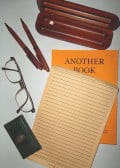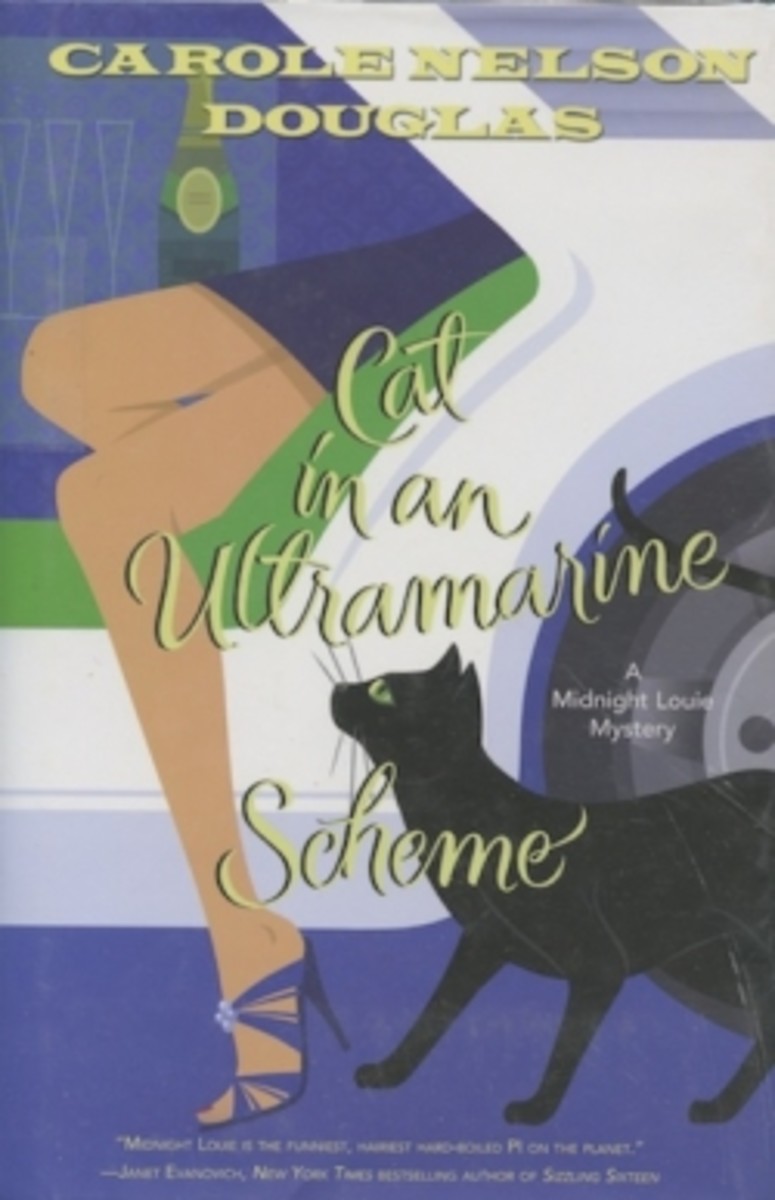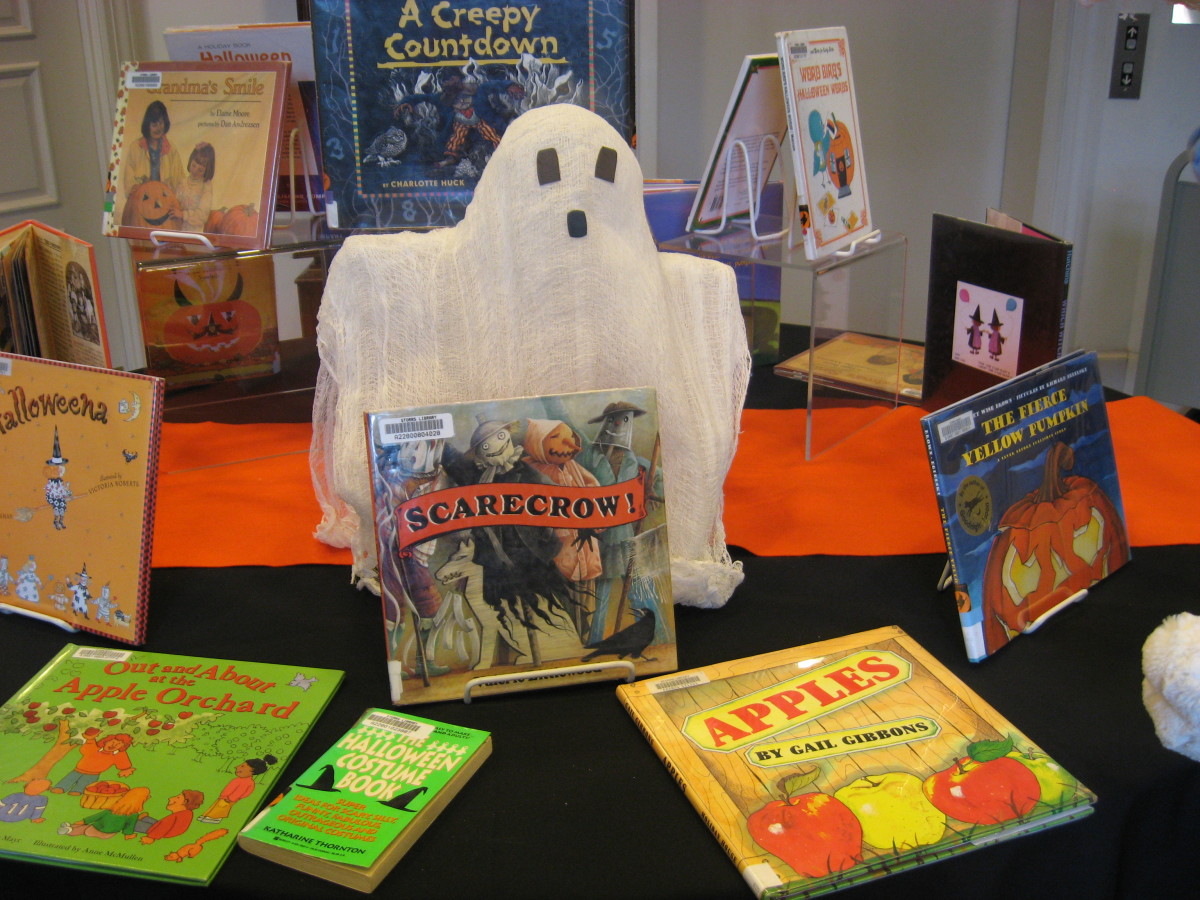Cynthia Rylant Beginning Chapter Books: Lesson Plans
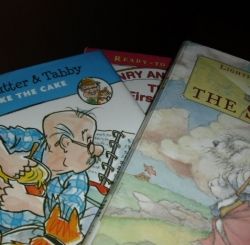
Literature for Early Readers
Literature for children who are still learning to decode? Sure! It takes talent to take big ideas and themes and scale them down. It also takes skill to develop character and add humor when using shorter sentences and a bit more repetition. It may be hard -- but it can be done.
Cynthia Rylant is one writer to look to. I first got to know her work when I read Missing May, a Newberry Award-winning book for ages ten and up. Missing May is slimmer than most Newberry books, and the language is simpler than some -- but the themes aren't. Rylant's ability to be touching one moment and humorous the next... well that blew me away.
Rylant's books for beginning readers are well done, too. You won't find such heavy themes in the series for primary grade students. But you will find themes. And you'll find some clever writing, the kind that will teach young readers about story elements (and give budding writers some new tricks).
Fully three titles have been included in the Common Core exemplar text set for second and third grade level. Henry and Mudge: First Adventure and Poppleton in Winter are at the low end of the grade range, The Lighthouse Family at the high end.
These particular titles are getting a lot of scrutiny. There are others out there that are worthy of attention.
Image by the Author
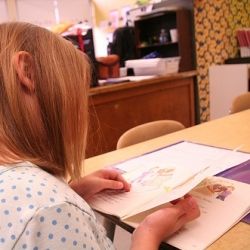
Henry and Mudge
Henry and Mudge: A boy and his dog. It's an easy to read series, but one with something a bit extra.
Consider this passage from the first book:
So Henry walked and walked, and he called and called, and he looked and looked for his dog Mudge.
There's a lot of repetition in that passage isn't there? The style is very different than Dr. Seuss and yet one thing is similar: The author has used a limited vocabulary, but still created a mood. The words repeat, but there's a reason for the repetition beyond just helping young readers recognize words. We get a sense of how hard Henry is looking. The repeated words also convey feeling.
Throughout the story, repetition is used to show the characters' feelings.
Here's the passage in context.
Image Credit: crschmidt, Flickr Creative Commons
Vocabulary from Henry and Mudge
Most of the following words will be familiar to students (unless they're second language learners). They may prove a decoding challenge for some, however. In some cases, the challenge is the suffix.
- searched, floppy, weighed
- tornadoes, straight
- milky, soapy
- shining, sniffing, whined
- finished, empty
- silent, remembered
Henry and Mudge as Mentor Text - Lesson Plan Ideas for Writing
Most Henry and Mudge lessons focus on foundational reading skills or grade-appropriate comprehension of literary text. Henry and Mudge is also a good mentor text for young writers.
Use details! we tell children when they begin composing narratives... and not just any details. Children are instructed to choose details that support their main idea or the feeling they are trying to express.
Henry and Mudge: First Adventure has an obvious main idea. The story is carried along by shifts in feeling: from loneliness to contentment to fear and back to (deeper) contentment. But you won't find many feeling words. No, you'll find details that convey feelings. the details are arranged in a 1-2-3 count them manner.
- Online Text from Watch, Know, Learn
Watch, Know, Learn has made an online version of the text available, presumably to aid teachers in discussion and planning.
Henry and Mudge Lesson Plans
- Guided Reading Lesson from Read, Write, Think
Here's the basics for using Henry and Mudge in guided reading. - Guided Reading: Suffixes
From Yahoo Voices comes a guided reading lesson that uses Henry and Mudge and the Long Weekend to teach suffixes. - Henry and Mudge Comprehension Questions and Printables
Here are comprehension questions for five books in the series. There are a few extra goodies like a comic strip frame for recording main events from chapters. - Theatre Works
Theatre Works has put together study resources especially for classroom where children will be seeing the show live.
Henry and Mudge: The Play - From Theatre Works
The Theatre Works play is a great opportunity to get some arts exposure.
There are significant plot differences between the text and the play -- this provides an opportunity to compare and contrast.
Observing Text Structure, Approaching Theme
Children at this age are just beginning to notice chapters. There is something unusual about the chapters in Henry and Mudge: The First Book. There's more than one chapter with the same name! There are "Henry" chapters and "Mudge" chapters and then at the end there is a chapter titled "Henry and Mudge".
Young readers can contemplate why this might be the case. In fact, they can share ideas two times, when they're first previewing the book and when they're wrapping it up.
Note: Henry and Mudge come together in this first book. And even though Henry gets Mudge early in the book -- and they clearly adore each other -- something happens to break them up. Mudge decides to take a walk by himself and gets briefly lost. Henry finds Mudge and the lesson stays with both of them: Don't get separated. By the end of the story, they have really become "Henry and Mudge".
Teaching Reading With Cynthia Rylant
This relatively new resource provides plenty of ideas for teaching Cynthia Rylant's well-known beginning reader series (Henry and Musge, Poppleton, and Mr. Putter and Tabby) along with eight of her picture books.
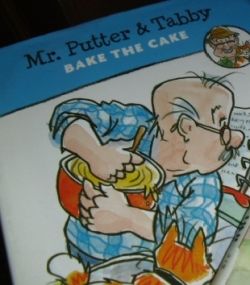
Mr. Putter and Tabby
Mr. Putter is a gentleman in at least his seventies -- I dare you to try counting the candles that appear on his birthday cake! He is part of an old tradition in very beginning chapter books. It's one where the sky is a little bluer, the world a little safer... and most of the sentences are justified right there along the left margin.
The adults in the stories are arguably a little more child-like, the animals a little more clever. Mr. Putter's closest companion is a cat,Tabby. She doesn't talk or wear clothing, but she is smart enough to understand Mr. Putter's conversation.
What can young readers learn from Mr. Putter and Tabby (besides how to decode words and play nicely)? They can learn how to tackle text that isn't completely straightforward.
'Mr. Putter Writes the Book': Making Inferences
Mr. Putter Lesson Plan
The icy winter world is a bit cold for Mr. Putter and Tabby, so Mr. Putter decides it's a good day to write a mystery story like the ones he enjoyed when he was a boy.
He is going to be a writer. (Or is he?) He wants to write this book. (Or does he?)
Cynthia Rylant tells us that Mr. Putter is going to be a mystery writer. She never once tells us that he isn't. Yet even a second grader will find clues that he might not accomplish this task.
This is a good place to talk about how readers combine story clues with their own knowledge of the world and use them to make inferences. (If someone sets out to write a book and then spends four hours in the kitchen cooking up a snack that includes a cheese ball and a custard pudding, what do they want more: to write the book -- or to not write it?)
At the end of the story, the reader learns that Mr. Putter can't wait for the next snow, so that he can be a writer again.
This is a good place for young readers to make predictions. Will Mr. Putter create a book when next it snows? Will he create something else -- a three-tier black forest cake, perhaps?
For the Sophisticated Primary Grade Reader
There's an old saying, "Once is funny, twice is silly..." But in fiction, sometimes twice is funnier. Rylant sets us up to believe that Mr. Putter will spends a day writing and then gives us something different in over-the-top detail... not once but twice. But when we're not ready to believe her any more, it's on to the next thing: a charming poem that Mr. Putter writes for his neighbor, Mrs. Teaberry.
Some of the humor in the writing will be beyond second graders' capacity to dissect. But they can model her style. Part of the humor in Mr. Putter and Tabby Write the Book comes from telling us one thing and showing us something entirely different.
More Lesson Plans for Mr. Putter and Tabby
- Teacher's Guide
The publisher, Harcourt, offers a downloadable teacher's guide. - Vocabulary and Comprehension for Mr. Putter Pours the Tea
A 2nd Grade Adventure has printables for Mr. Putter Pours the Tea in Google Doc format. - Comprehension and Activities for Mr. Putter and Tabby Fly the Plane
Vermillion Parish Schools has collected a lot of resources.
Learning from Series Books
Comparing and contrasting books in a series is among the goals for third grade.
This unit plan, from Yale, helps students do that. The Henry and Mudge series is used to introduce the unit. The teacher does some mini-lessons, reading aloud and thinking aloud -- to begin the unit. Later students work in pairs to tackle a series at their reading level.
The unit plan includes a list of series books for second and third grade students who are reading at different levels.
- Getting Serious About Reading in a Series
Lesson plans for grades two and three.
Starting with the First Book in the Series
To varying degrees in each of these series, the first book sets the scene. The opening scene of Mr. Putter and Tabby Pour the Tea is particularly moving. Mr. Putter goes to a shelter for a feline companion and is drawn to a kitty that's old like himself.
Poppleton
Here we have a talking pig and a host of traditional animals-as-people characters. In his first adventure, Poppleton learns a lesson about friendship and about expressing needs in a mature manner. He doesn't know how to stop turning down his neighbor Cherry Sue's invitations -- and she doesn't know how to stop extending them.
Poppleton Lesson Plans
- Using Poppleton to Develop Basic Comprehension Skills
Strategies for using Poppleton in comprehension tutoring. - Common Core Lesson Plans
Here Poppleton in Winter is paired with other seasonal books. The lesson plan for Poppleton focuses on story structure (how the author begins and ends the story). - Studying the Seasons with Poppleton
This lesson plan, by Alabama Learning Exchange uses three Poppleton books to teach first graders about the seasons.
The Lighthouse Family - Moving up to Third Grade
The Lighthouse Family is a step up for a young reader -- no controlled vocabulary here. Like several of Rylant's other young reader series, the first story focuses on the beginnings of a relationship. This time, the protagonist herself is an animal.
Pandora the cat -- like Henry before Mudge, like Mr. Putter before Tabby -- is lonely. But her loneliness is the price of conviction. Once upon a time, she was saved by the light of a lighthouse. She decided it was her destiny to be a lighthouse keeper. Since she can't abandon the lighthouse, she's oh-so-grateful for the companions that are eventually washed ashore. The sailor dog is only planning to stay until he recuperates. But then come the mice children...
In some ways, The Lighthouse Family is a throw-back to earlier times: It takes talking animals, infuses some subtle messages about character and goodness, and throws controlled vocabulary to the wind. The book is short and includes quite few pictures, but the language is atmospheric, even lavish.
Once again WatchKnowLearn provides us with a sample of the book: audio as well as text.
- The Lighthouse Family
Online text and audio.
Vocabulary from The Lighthouse Family: The Storm
- lighthouse kindhearted overlooking, schooner jagged aloft bewilderment overwheming riggings beacon emerges unpredictable faithfully weary
- keen instincts sheltered cove agitated harbor enormous
- gingham extended exclaimed plantain* seasonable migrate sociable flutters solitary
- companions scones responsibilities harvest driftwood kerosene gardened tending mallards warblers
- unpredictability, intended, frantic, still-splintered creeping astonishing witness raged shawl tending
- purpose* sorrowful resourceful essential entire magnificent disassembled replaced ashore gazebo
- venture mantle exhausted drifting fetch
- tattered vigorously unable
- situation blessedly delighted cottage introduced distress infant breeze
- thimbleful amazing transformed dwellers separated unending fondly pelican soundly
Lesson Plans for The Lighthouse Family
- Studying Plot with Pitner's Potpouri
Here's a printable resource to help children keep track of the plot. - Resources from Watch Know Learn
Read the first part of the story in educational video format. Also view related videos.
The Lighthouse Family Series
Libraries and Guided Reading Sets
I often see collections of Henry and Mudge books that would go great in the classroom.









